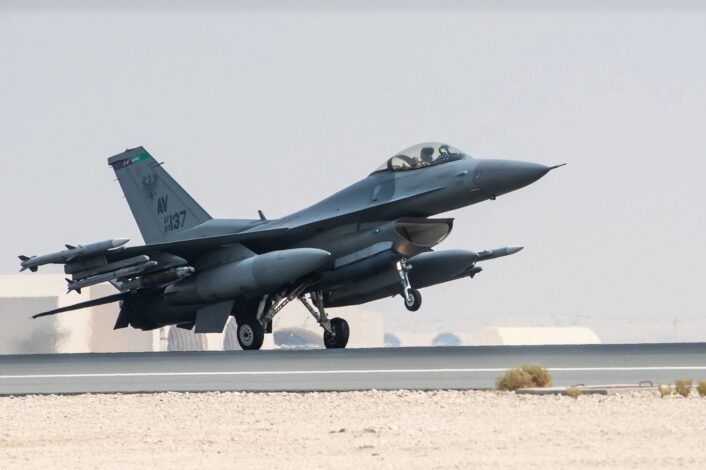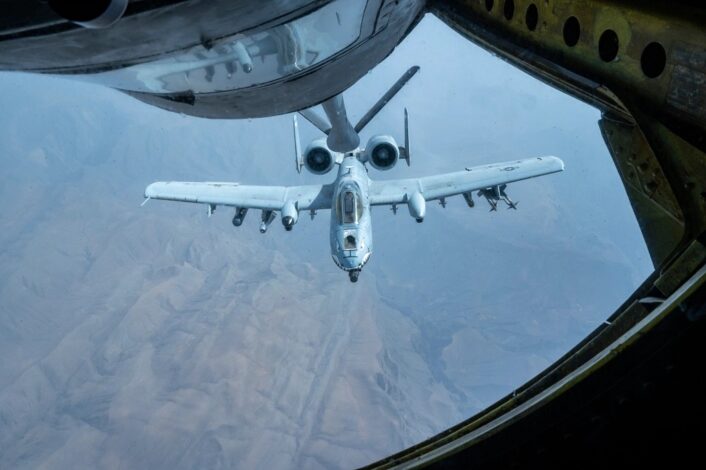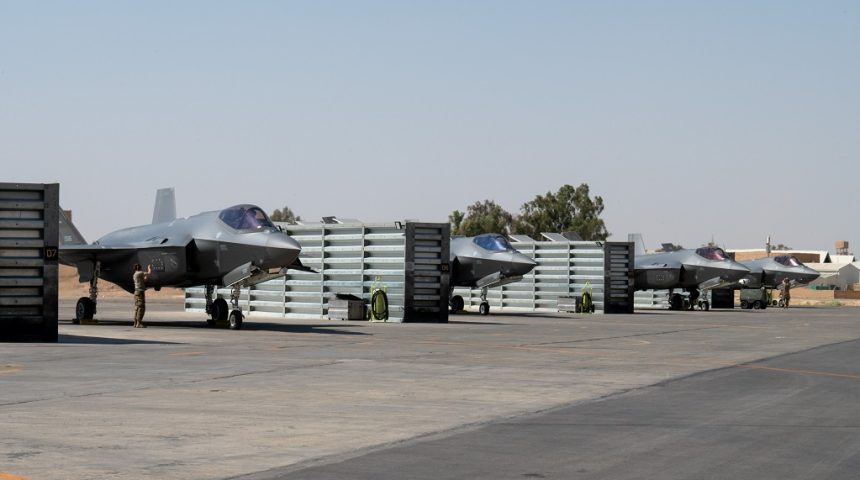The deployment follows Iran’s attempts to seize commercial vessels in the Strait of Hormuz.
Earlier this month, the U.S. Secretary of Defense has ordered the deployment of the USS Bataan Amphibious Readiness Group/Marine Expeditionary Unit (ARG/MEU), F-35s, F-16s and the USS Thomas Hudner guided missile destroyer into the CENTCOM area of responsibility (AOR), in response to recent attempts by Iran to threaten the free flow of commerce in the Strait of Hormuz and its surrounding waters.
The decision follows Iran’s recent attempts to seize two commercial oil tankers, with shots fired on one of them, which were deterred by the arrival on scene of the USS McFaul guided missile destroyer. A squadron of F-16s and one of A-10s were already deployed in the area, as well as P-8 Poseidon maritime patrol aircraft. After the arrival of the additional F-16 squadron last week, now also the F-35s landed in the Middle East.
The F-35s are assigned to the 421st Expeditionary Fighter Squadron from Hill AFB, Utah, and “will help defend interests, promote regional security and safeguard freedom of navigation in the region,” according to the press release. The length and the location of the deployment have not been disclosed due to “operational security and host nation requests”.
When the deployment was announced, defense officials said, if required, the F-35s could be used in contested airspace over the Gulf and the Strait of Hormuz and over Syria if Russia presented a more significant threat. The deployment, in fact, also comes as Russian Su-35s keep harassing U.S. aircraft, both manned and unmanned, over Syria.
As we reported just few days ago, on July 23, a Russian Su-35 fighter deployed flares directly overhead an MQ-9 Reaper RPA, severely damaging its propeller. The Associated Press is reporting that another MQ-9 has also been damaged by flares on July 26, with the Russians blaming the U.S. by saying the drone flew dangerously close to a Su-34 and Su-35 aircraft on patrol.

Rear Adm. Oleg Gurinov, the head of the Russian military’s Reconciliation Center in Syria, said that the Sukhois’ onboard systems “spotted the aircraft being targeted and triggered the automatic release of flares”. He also added that Russian pilots “showed a high degree of professionalism and took timely steps to avoid a collision with the drone.”
A week before the arrival of the F-35s, a number of F-16s assigned to the 555th Expeditionary Fighter Squadron from Aviano Air Base, Italy, arrived at Al Dhafra Air Base, United Arab Emirates, to bolster the security above the Strait of Hormuz and preserve a free and open shipping lane in the Arabian Gulf. The F-16’s arrival in theater happened almost simultaneously with the announcement of the deployment of additional assets in response to the recent events in the area.
Notably, among the deployed F-16s, there is also tail 89-2137, the aircraft that during the NATO 1994 mission over Bosnia and Herzegovina scored the first single-mission triple kill by a U.S. Air Force pilot since the Korean War. The aircraft, which at the time was assigned to the 526th Fighter Squadron, was flying a mission on February 28, 1994, when six Serbian J-21s were spotted. Then-Capt. Robert Gordon “Wilbur” Wright was cleared to engage and within few minutes shot three of them down using an AIM-120 AMRAAM and two AIM-9 Sidewinders.
The other F-16 squadron which was already deployed is the Reserve’s 457th Expeditionary Fighter Squadron from the 301st Fighter Wing at Naval Air Station Joint Reserve Base Fort Worth, Texas. The unit, arrived in the CENTCOM AOR in early April, is performing its last deployment with the F-16, ahead of the conversion to the F-35 in 2024. The 301st FW was in fact selected to become Air Force Reserve Command’s first ever F-35A Lightning II unit.
Also in early April, the A-10Cs of the 75th Expeditionary Fighter Squadron from Moody Air Force Base, Georgia, arrived at Al Dhafra Air Base and joined the 380th Air Expeditionary Wing. The press release at the time stated that the deployment of the A-10 offers the opportunity for U.S. Air Forces Central Command to experiment with close air support capabilities in order to achieve the most robust, diverse force possible.

“With the A-10 mission move to Al Dhafra AB, the operations and maintenance teams will be mastering rapid aircraft generation and sortie execution in different environments,” said Brig. Gen. David R. Lopez, 380th AEW commander. “The A-10s will practice agile combat employment with multi-capable airmen from forward operating locations, and support active operations and partner nation integration. The team has successfully integrated into the 380 AEW’s operations, we can’t wait to see all that they accomplish over the rest of their deployment.”
As a matter of fact, the A-10s took part in multiple exercises, including the large-scale maritime exercise Neptune’s Kilt with the U.S. Navy and the Royal Navy in the Arabian Gulf. The exercise focused on the proficiency in mine countermeasures and the integration of tactics from the air and sea, with maritime forces practicing procedures for detecting, classifying and clearing mines as A-10s conducted unit defense training.
Another exercise, which saw the participation of U.S. F-16s and MQ-9s, as well as Royal Air Force Typhoon GR4s and undisclosed assets from France and three other regional air forces, focused on various aspects of countering Unmanned Aircraft Systems threats, including detection, tracking, and engagement techniques. Through realistic scenarios and simulated UAS threats, participating forces enhanced their situational awareness, refined their tactics, and developed effective countermeasures.
With the rapid proliferation of UAS technology, it has become imperative for nations to enhance their C-UAS capabilities, said the press release. The recently concluded exercise served as a crucial platform for AFCENT and its partners to improve their ability to effectively neutralize UAS threats, ensuring the safety and security of their respective airspace. This was especially relevant as Iran is heavily focused on the development and employment of UAS assets, as it has been demonstrated various times throughout the years.
“This C-UAS exercise demonstrates our unwavering commitment to enhancing collective defense capabilities across the Middle East region,” said U.S. Air Force Brig. Gen. David Mineau, Ninth Air Force (Air Forces Central) deputy commander and Deputy Combined Forces Air Component Commander for U.S. Central Command. “By working closely with our regional and coalition partners, we aim to strengthen our ability to detect, track, and neutralize UAS threats, ultimately ensuring the safety of our partner nations and forces.”









